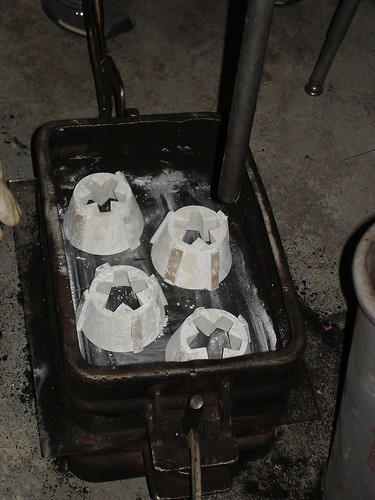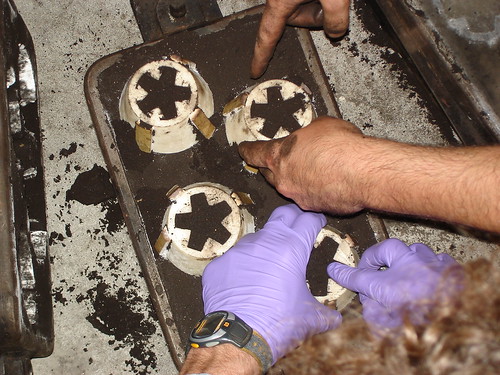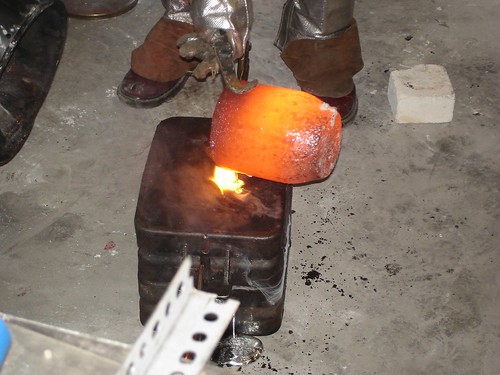Showing posts with label IDDS. Show all posts
Showing posts with label IDDS. Show all posts
International Development Design Summit
The 2010 International Development Design Summit (IDDS) will take place from 7-30 July at Colorado State University in Fort Collins, CO, USA. IDDS 2010 will be somewhat different from previous years - whereas past summits focused on creating prototypes, this summit will focus on turning these prototypes into products and getting them into the hands of people who can use them. It is the goal of IDDS 2010 to guide project teams through the process of becoming viable ventures with business plans to disseminate their innovations at scale. Participants will have the opportunity to explore the many challenges of entrepreneurship and technology dissemination for developing markets with a diverse group of people from around the globe.
International Development Design Summit 2009
The 90 participants and organizers from around the world will work together to attempt to create, within weeks, technologies that could change lives. The twelve project IDDS 2009 teams went as follows:
Water, Sanitation and Health:
Chlorine Dosing
Local Chloring Production
Kid Friendly Latrine
ICT Enabled Baby Monitoring
Energy and Environment:
Small Scale Energy Storage
Cool Storage
Recycled Plastic Products
Portable Hydro Powered Light
Agricultural Processes:
Groundnut Threshing
Cassava Processing
Rice Threshing
Shea Oil Extraction
TO LEARN MORE ABOUT THE SUMMIT, VISIT THE 2009 BLOG OR IDDS HOMEPAGE.
Water, Sanitation and Health:
Chlorine Dosing
Local Chloring Production
Kid Friendly Latrine
ICT Enabled Baby Monitoring
Energy and Environment:
Small Scale Energy Storage
Cool Storage
Recycled Plastic Products
Portable Hydro Powered Light
Agricultural Processes:
Groundnut Threshing
Cassava Processing
Rice Threshing
Shea Oil Extraction
TO LEARN MORE ABOUT THE SUMMIT, VISIT THE 2009 BLOG OR IDDS HOMEPAGE.
International Development Design Summit
IDDS aims to produce innovative, affordable, scalable technologies to meet the very real needs of the 2.6 billion people earning less than $2-a-day. Participants receive a crash course in developing appropriate technology and then break into small teams, each receiving a different design challenge to solve a specific problem faced daily by people around the world. Unlike most academic conferences, this summit emphasizes the development of prototypes, not just papers and proceedings. Unlike technology workshops, IDDS is about creative processes, as well as products.
TO LEARN MORE ABOUT THE SUMMIT, VISIT THE 2009 BLOG OR IDDS HOMEPAGE.
TO LEARN MORE ABOUT THE SUMMIT, VISIT THE 2009 BLOG OR IDDS HOMEPAGE.
Power generation from mechanical devices
Power generation from mechanical devices is a project developed by a team at IDDS 2008. The motion from everyday tasks can provide low-cost electricity for lighting and other appliances in rural households.
Incorporating electricity generation into the daily routine can reduce the time, effort, and cost burden of the user. The team feels that harnessing daily tasks to provide electricity is more acceptable than isolated stationary human power generation because people who have already worked all day may not want to work again to power a light at night. There are many possible motions for electricity generation, such as using a hand pump to collect water, using a mortar and pestle to grind grain into flour, using a treadle pump to irrigate fields, walking or running, riding a bicycle, and even the motion of animals. This team chose to convert the motion of the treadle pump into electricity because it is a widespread irrigation tool used by millions in Asia and Africa.
There are many potential benefits of being able to generate electricity while pumping water for agriculture. The basic mechanical challenge was to convert the linear oscillatory motion of the treadle pump pedals to a unidirectional circular motion. All major components have been derived from bicycle parts. Consequently, all parts are easily and widely available at fairly low cost all around the world. Maintenance of devices can therefore be taken care of by any local bicycle mechanics without any special training.
Incorporating electricity generation into the daily routine can reduce the time, effort, and cost burden of the user. The team feels that harnessing daily tasks to provide electricity is more acceptable than isolated stationary human power generation because people who have already worked all day may not want to work again to power a light at night. There are many possible motions for electricity generation, such as using a hand pump to collect water, using a mortar and pestle to grind grain into flour, using a treadle pump to irrigate fields, walking or running, riding a bicycle, and even the motion of animals. This team chose to convert the motion of the treadle pump into electricity because it is a widespread irrigation tool used by millions in Asia and Africa.
There are many potential benefits of being able to generate electricity while pumping water for agriculture. The basic mechanical challenge was to convert the linear oscillatory motion of the treadle pump pedals to a unidirectional circular motion. All major components have been derived from bicycle parts. Consequently, all parts are easily and widely available at fairly low cost all around the world. Maintenance of devices can therefore be taken care of by any local bicycle mechanics without any special training.
Charcoal crushing device
MIT's D-lab developed a method to turn agricultural wastes into affordable smokeless fuels, such as sugarcane charcoal and corn cob charcoal. This agricultural waste charcoal has the potential to combat deforestation and reduce the dangerous effects of indoor cooking fires. One limiting factor in the adoption of this technology is the need for a charcoal crusher. Burning carbonized cobs produces less smoke than regular biomass fuels, but the carbonized cobs produce a hazardous level of carbon monoxide. D-lab developed a device to turn charcoal powder into a dense compact briquette that burns safely, but it is difficult to crush the carbonized cobs into a charcoal powder without inhaling dangerous amounts of charcoal dust. A team during the IDDS 2008 built a charcoal crushing device which addresses the gap in this alternative fuel process.
The device limits the user's exposure to the charcoal dust that is harmful when inhaled. Charcoal dust consists of super fine particles of charcoal that are thrown into the air when the carbonized cobs are being crushed or when the charcoal powder is being transported or agitated. To minimize transfer of the charcoal powder from one receptacle to another, the device deposits charcoal powder directly into the container where it is mixed with a wet binder. After the user deposits carbonized cobs into the device's hopper, the lid prevents the charcoal dust from escaping. Depending on the materials available, the grating cylinder can be made from expanded steel tack welded to a steel pipe, or cement poured into a mold made from a PCV pipe.
The device limits the user's exposure to the charcoal dust that is harmful when inhaled. Charcoal dust consists of super fine particles of charcoal that are thrown into the air when the carbonized cobs are being crushed or when the charcoal powder is being transported or agitated. To minimize transfer of the charcoal powder from one receptacle to another, the device deposits charcoal powder directly into the container where it is mixed with a wet binder. After the user deposits carbonized cobs into the device's hopper, the lid prevents the charcoal dust from escaping. Depending on the materials available, the grating cylinder can be made from expanded steel tack welded to a steel pipe, or cement poured into a mold made from a PCV pipe.
Pico hydro generator
Pico hydro generator is a project developed at MIT during the IDDS 2008. A team proposes the use of Pico Hydro power systems in Guatemala and Honduras to meet rural electricity demands, cleanly and efficiently. Specifically this team developed tools that can be used to easily convert a car alternator into an electric generator for a Pico Hydro system.
This system is expected to generate about half a kilowatt of power enough to power lights and radios, agricultural processing equipment, and/or charge batteries which will be useful to families currently living in isolated mountainous areas without access to the electrical grid. The system consists of an impulse turbine built from PVC piping and a Toyota pickup alternator converted into a generator (which runs at a more suitable rotational speed than the original alternator and doesn't require a current for start-up). The most expensive and difficult-to-build part of these systems is the electrical generator. The generator requires a laminated steel core to which strong magnets are attached. Cutting out laminates for the generator core by hand takes one person three days. This team developed three tools to cut out this laminate shape in a quick and repeatable manner. The tools are simple. After an investment of about 1-2 days to build these tools, they will save at least 2/3rds of the time necessary to build a generator core, cutting the fabrication down to less than one day.
Thanks to the use of appropriate technology in these four cases, it has been possible to provide products/services to people who normally do not have access to them (e.g. small drip irrigation system, electricity and so on). It also has a direct impact in the reduction of costs as well as increases in productivity which are strong evidence of business performance. These reductions in costs allow that the bottom of the pyramid be reached as beneficiaries.
This system is expected to generate about half a kilowatt of power enough to power lights and radios, agricultural processing equipment, and/or charge batteries which will be useful to families currently living in isolated mountainous areas without access to the electrical grid. The system consists of an impulse turbine built from PVC piping and a Toyota pickup alternator converted into a generator (which runs at a more suitable rotational speed than the original alternator and doesn't require a current for start-up). The most expensive and difficult-to-build part of these systems is the electrical generator. The generator requires a laminated steel core to which strong magnets are attached. Cutting out laminates for the generator core by hand takes one person three days. This team developed three tools to cut out this laminate shape in a quick and repeatable manner. The tools are simple. After an investment of about 1-2 days to build these tools, they will save at least 2/3rds of the time necessary to build a generator core, cutting the fabrication down to less than one day.
Thanks to the use of appropriate technology in these four cases, it has been possible to provide products/services to people who normally do not have access to them (e.g. small drip irrigation system, electricity and so on). It also has a direct impact in the reduction of costs as well as increases in productivity which are strong evidence of business performance. These reductions in costs allow that the bottom of the pyramid be reached as beneficiaries.
XO Incubator
Our group with some participants in the International Development Design Summit have been designed an incubator for low birth weight babies in the developing world. 20 millons LBW babies born every year, 96% in the developing world. Incubators in developed countries are designed for hospitals: hard to repair, complex and expensive
We aim to imporve access to incubators and increase their effectiveness. It is a modular incubator: simple and adaptable with easily replaceable parts, allowing medical facilities to buy only what they need and to easily scale up over time. The incubator uses a XO laptop and low cost sensors for sensing medical signals.
The incubator will be used in rural health centers in the andes of Peru and manufactured locally by SMEs.
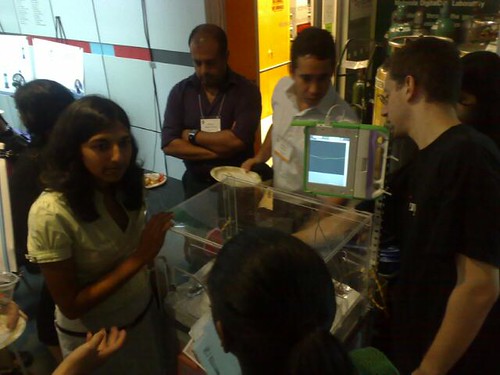
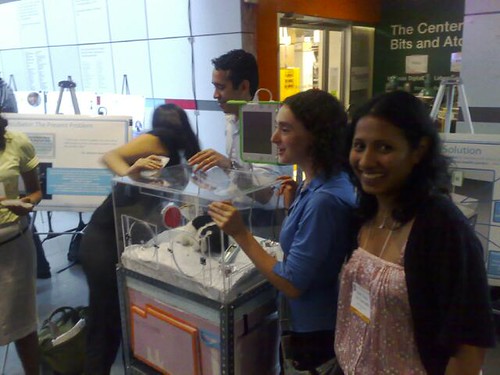
We aim to imporve access to incubators and increase their effectiveness. It is a modular incubator: simple and adaptable with easily replaceable parts, allowing medical facilities to buy only what they need and to easily scale up over time. The incubator uses a XO laptop and low cost sensors for sensing medical signals.
The incubator will be used in rural health centers in the andes of Peru and manufactured locally by SMEs.


International Development Design Summit
Here is the list of projects that we will be working on at IDDS 2008:
1.System for Flash Heating Breast Milk to help combat transmission of HIV
2.Incubator for low birth weight infants in rural zones
3.Hand held medical diagnostic tool
4.Micro Hydro Small scale water power
5.Power Generation from Mechanical Devices
6.Ropeway Transport system
7.Charcoal Crusher
8.Pearl Millet Thresher
9.Educational Television Computer
10.Interlocking Stabilized Soil Block Maker
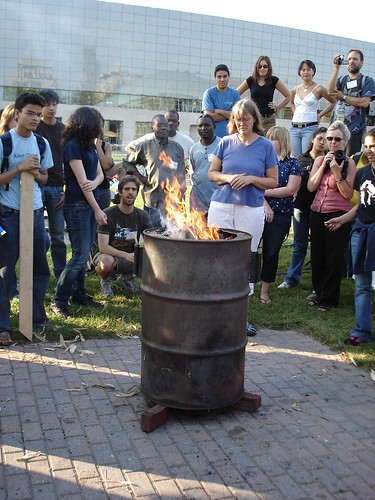
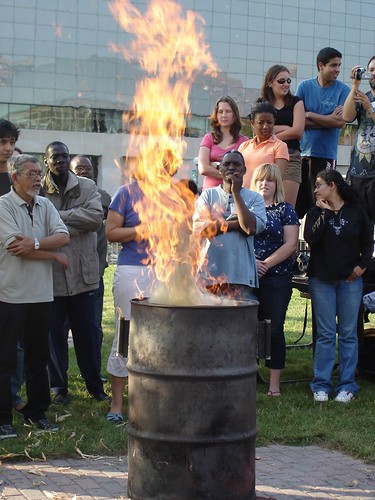
I am at IDDS-MIT working on project 2: "Incubator for low birth weight infants in rural zones".
1.System for Flash Heating Breast Milk to help combat transmission of HIV
2.Incubator for low birth weight infants in rural zones
3.Hand held medical diagnostic tool
4.Micro Hydro Small scale water power
5.Power Generation from Mechanical Devices
6.Ropeway Transport system
7.Charcoal Crusher
8.Pearl Millet Thresher
9.Educational Television Computer
10.Interlocking Stabilized Soil Block Maker


I am at IDDS-MIT working on project 2: "Incubator for low birth weight infants in rural zones".
Incubator for low birth weight infants in rural zones
Incubator for low birth weight infants in rural zones: Bridge the gap between healthcare available to urban and rural born infants.
High mortality rate of low-birth-weight (LBW) infants in rural zones could be prevented with access to an incubator, a device that provides a stable and safe environment for the baby. Traditional incubators are expensive and available primarily in urban hospitals. The challenge is to design an incubator to work in rural zones. It uses no electricity, is portable, easy to sterilize, reusable and intuitive to use. It facilitates and complements the widely practiced technique of kangaroo mother care.
High mortality rate of low-birth-weight (LBW) infants in rural zones could be prevented with access to an incubator, a device that provides a stable and safe environment for the baby. Traditional incubators are expensive and available primarily in urban hospitals. The challenge is to design an incubator to work in rural zones. It uses no electricity, is portable, easy to sterilize, reusable and intuitive to use. It facilitates and complements the widely practiced technique of kangaroo mother care.
Lightweight Foldable Greenhouses
Lightweight Foldable Greenhouses: Protecting Plants, Animals and People from Extreme Climate Events.
There is a growing concern about global climate change and the impact it has on people and the ecosystems on which they depend. In Peru, people from the Andes are the most affected and the region consistently has the worst indicators for access to telecommunications, health, water, education and extreme poverty. Foldable greenhouses made of cartonplast are an extremely economical solution for protecting plants, animals and people in the Andes. It could be deployed very quickly and cover large areas.
There is a growing concern about global climate change and the impact it has on people and the ecosystems on which they depend. In Peru, people from the Andes are the most affected and the region consistently has the worst indicators for access to telecommunications, health, water, education and extreme poverty. Foldable greenhouses made of cartonplast are an extremely economical solution for protecting plants, animals and people in the Andes. It could be deployed very quickly and cover large areas.
Subscribe to:
Posts (Atom)
Science, Technology, Business, Development, Innovation, Business Plans, Entrepreneurship, Social Responsibility, Open Source, Software, DIY, Citizen Science, Research, University, Laboratory, Startups, Spin-offs, Society, High Tech, Appropriate Technology, Inventors, Scientists, Technologists, Health, Global Change, Poverty, Third World, Design, Green, Physics, Mathematics, Biology, Chemistry, Medicine, BoP, Communities, Networks, Jam, Creative Commons, Wiki, Hacking, Labs, Public Domain, Pro Poor, Sustainability, Renovable Energy, Research, Nature, Peer to Peer, Books, Teaching, Web 2.0, On Line Learning, Lemelson RAMP, Google Summer of Code, Google Code In, Google Science Fair, Intel Challenge, BIOMOD, OLPC, iGEM, IDDS, Microtelcos, Wireless, Create the Future Design Contest, Moonbots, Knowledge, Entrepreneurs, Open Access, Inventions, Incubators, Projects, Engineering, Engineers, Women, Policy, Popular Science, Astronomy, Agriculture, Water, Climate Change, REE, Hacker Spaces, Open Innovation, Yachachiq, BiD Network, Technoserve, Peru, MOOC, Crowdfunding, Startup Chile, Startup Peru, Instructables, NASA, FabLab, FoodLab, GSoC, GCI



